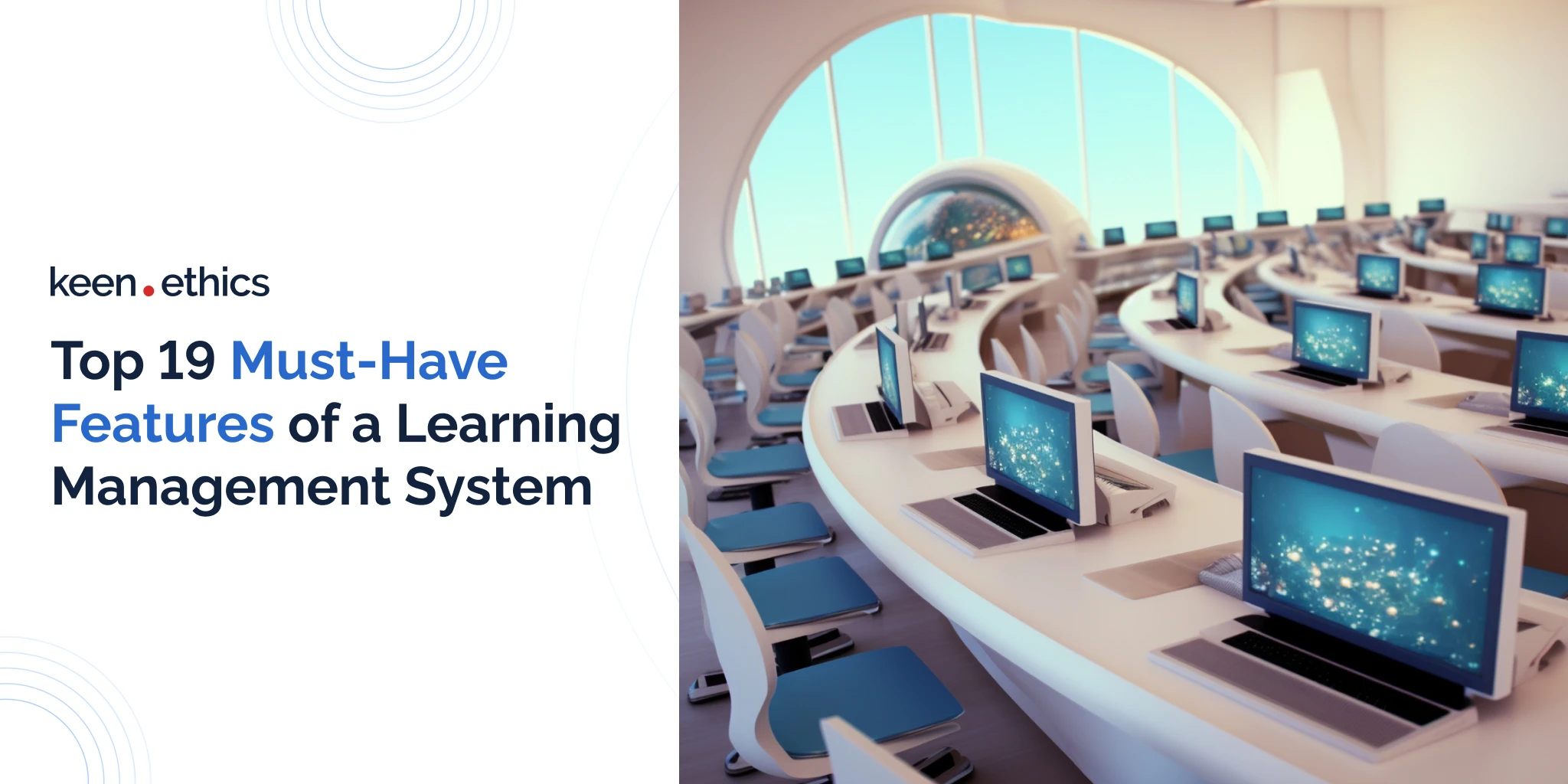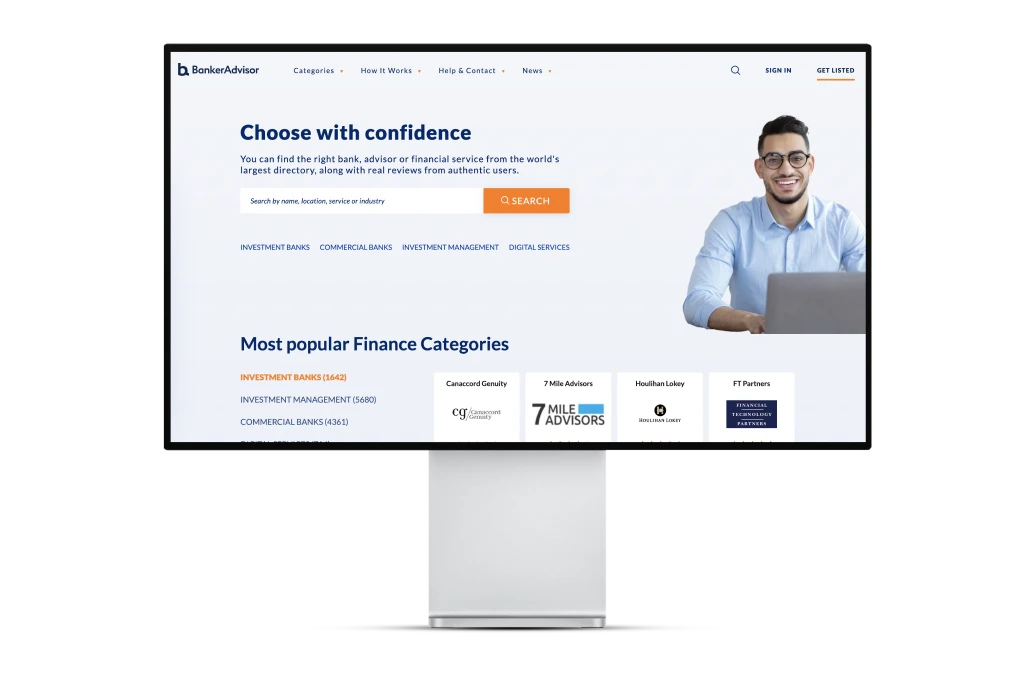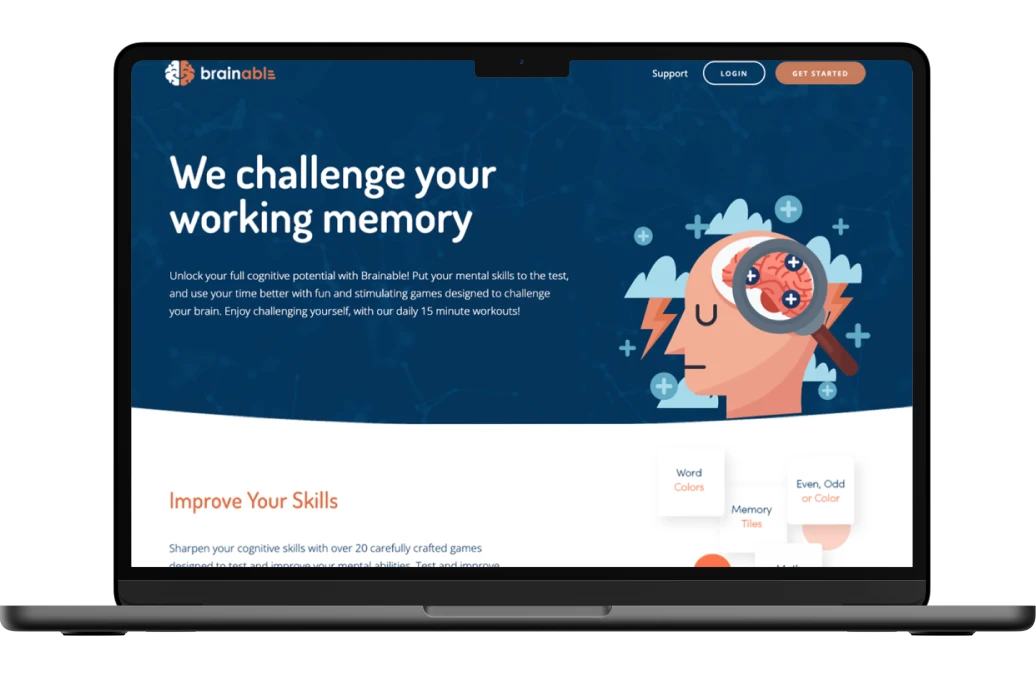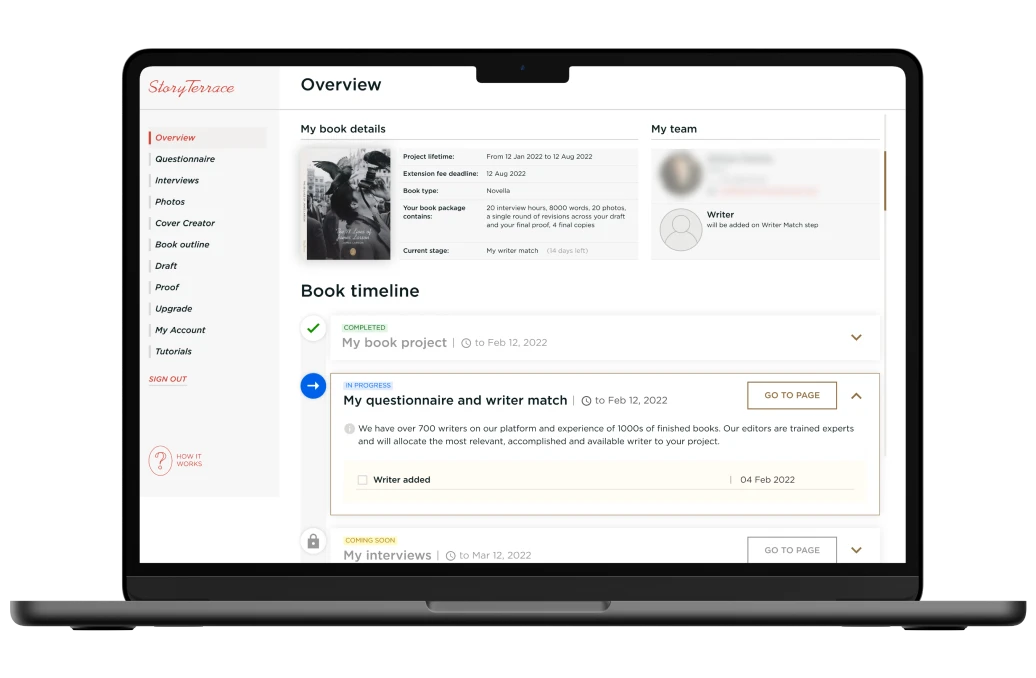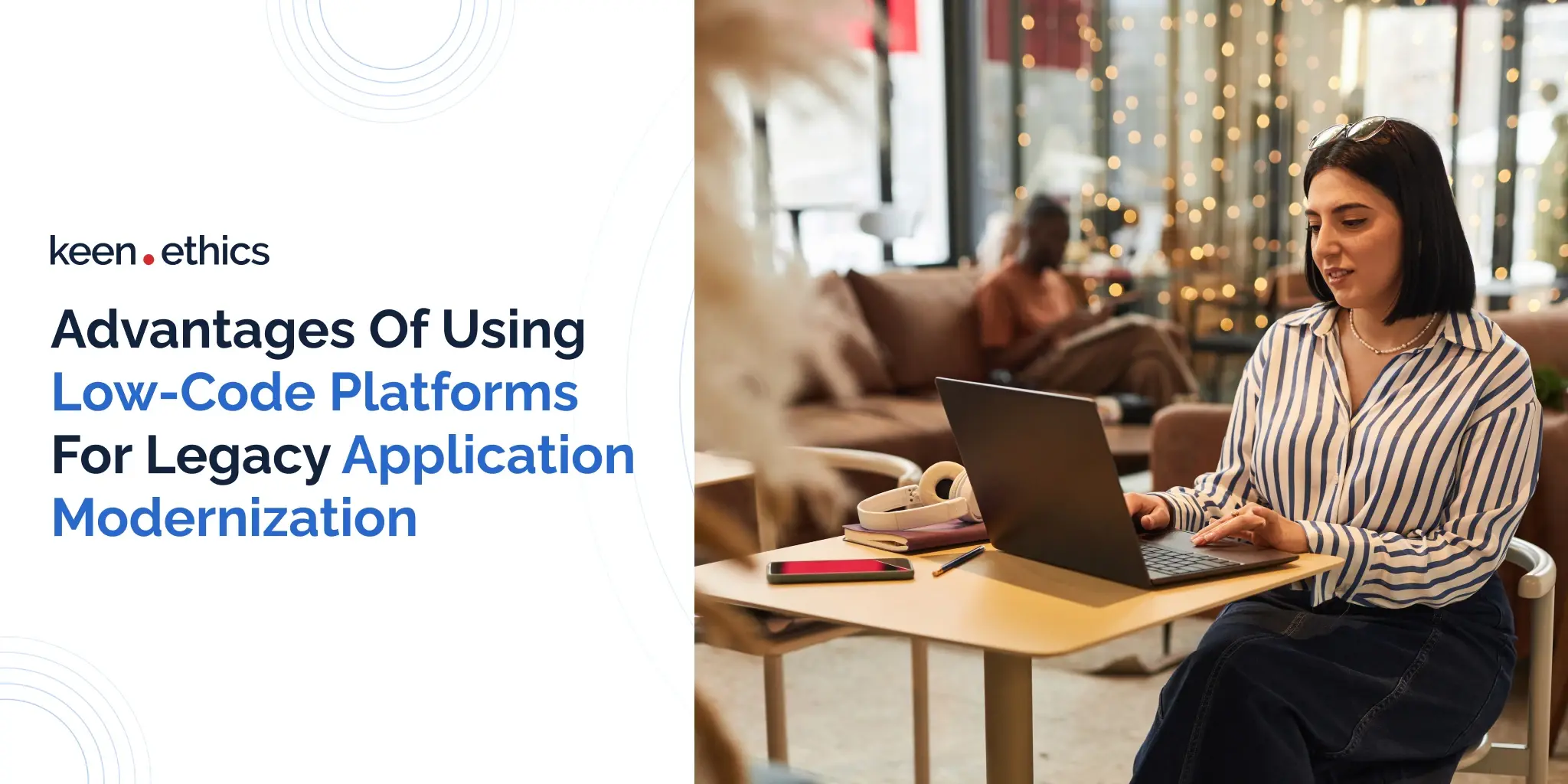Do you want to develop your own learning management system or find a high-quality education solution on the market? In this case, it’s essential to know the core learning management system features. The main goal of this article is to assist the readers with understanding the fundamental elements any LMS needs. Firstly, we’ll outline the general definition of a Learning Management System. Secondly, we’ll help the readers orient in the existing types of Learning Management Systems. Lastly, we’ll transition to the top 19 features of Learning Management Systems, assisting users with understanding what they need for apps featuring core training content.
What is a Learning Management System?
Let’s start with a definition of a Learning Management System. As you can guess from the title, it’s a system for managing various learning scenarios. In it, the relevant decision-makers can plan, implement, and control different types of learning programs. Today, there’s a tremendous number of solutions targeting diverse markets, such as business training and school education. One may use these systems both for creating training sessions in a company and to promote new learning programs in college.
What are some examples of high-quality Learning Management Systems in the current market? Google Classroom, Absorb LMS, and 360 Learning are good instances of tools you can use for skills development in any location. In particular, Google Classroom is a powerful solution aimed at schools: due to the spread of distance learning, it became one of the most popular LMS solutions on the market. Even though the market is saturated with various solutions, this doesn’t mean that no place for innovations is present. Many LMSs don’t cover non-traditional learning paths, enabling long-term investments into solutions targeting previously untouched market niches.
What Are the Different Types of LMS?
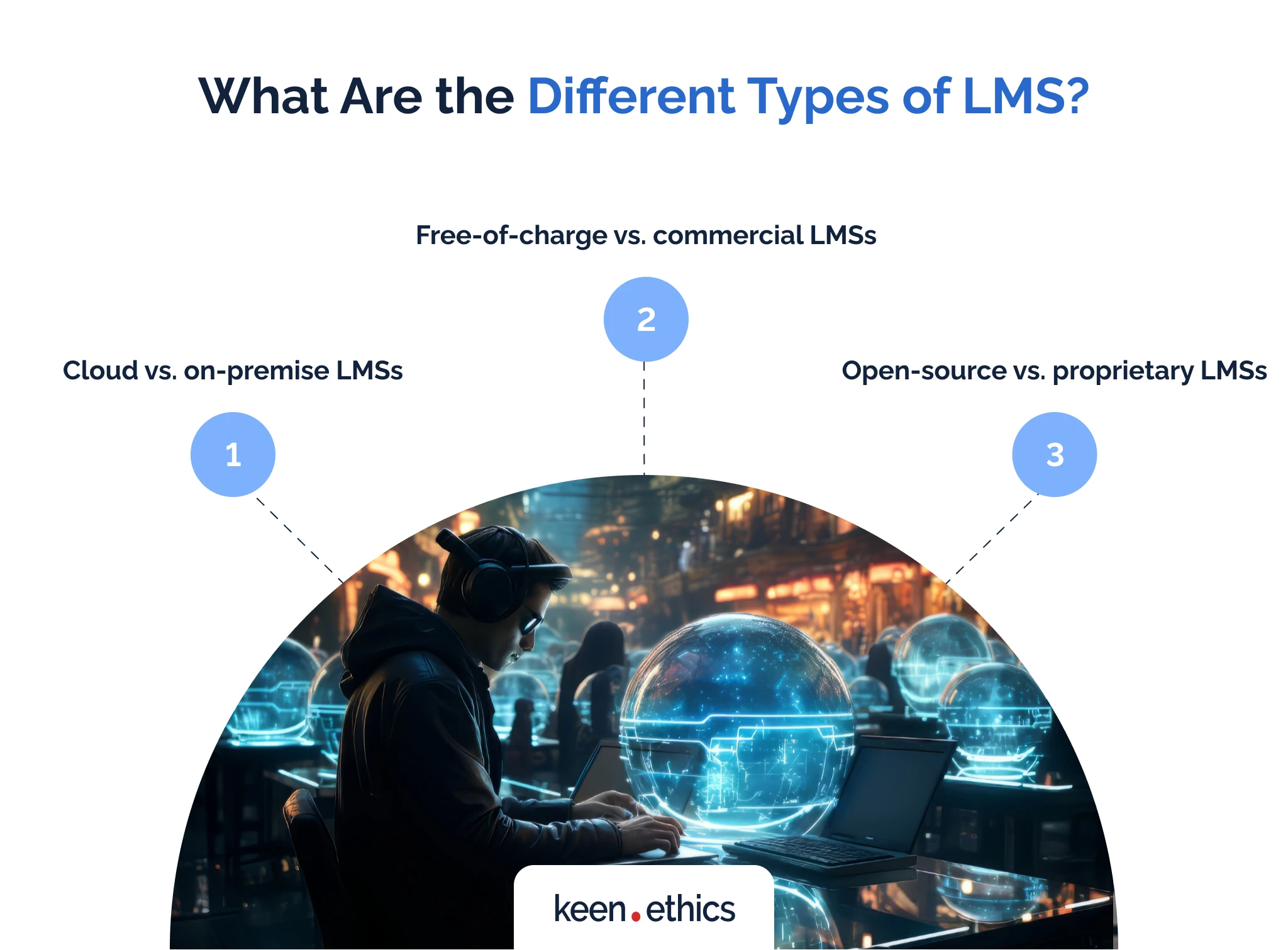
It’s also crucial to look at different types of LMS to understand the presented market completely. In this regard, the following classifications are possible:
Cloud vs. on-premise LMSs
The first important difference in the LMS market undoubtedly involves the approach to installation. On the one hand, you can go for cloud-based LMSs. These systems are visible due to hosting the majority of their functions online. This model has both significant benefits and downsides. Concerning benefits, it allows for better scalability and, more importantly, enables distance learning. However, the approach is notable for potentially decreasing security levels in certain situations.
On the other hand, on-premise solutions are noteworthy for giving full control over the relevant systems to their owners. In this case, one can install those frameworks directly on their servers and, hence, have much more agency in decision-making processes. This approach is great in situations when you need more freedom in configuring a system. Simultaneously, it gives all the reigns of control over security to you, greatly raising pressure on the data safety experts.
Free-of-charge vs. commercial LMSs
Another important difference in the market lies between the free-of-charge and commercial LMSs. Free-of-charge solutions are usually noteworthy for having a smaller number of features than commercial ones. Their core advantage is being free, which is central for companies that don’t need any complex training programs.
Contrary to that, commercial apps usually require payment for their usage. In many situations, you have to pay for a certain number of users. When is it rational to use these systems? In our opinion, when your training tasks go beyond compliance training. For instance, if you need to teach your employees how to use particular machinery, then free LMSs may be insufficient. Why? They may have significant limits on the amount of content you can upload. Moreover, there’s a problem with the training module deficit. Many small-scale free LMSs don’t have integration for vital features such as VR and AI. Thus, any advanced task requires an investment in commercial frameworks
Open-source vs. proprietary LMSs
Open-source and proprietary LMSs are the final noteworthy group in the presented list. An open-source solution is an app with an open code base, which can be modified by any outside group. For example, Moodle is an open-source system: this means outside developers can make their own forks of the software to create additional features. These systems are usually free of charge, even if they’re developed by certain companies. Core advantages include low usage costs and the ability to add modifications at will. At the same time, most systems of this kind are amateur and may lack an essential feature or two in terms of user-friendliness.
In turn, a proprietary solution is typically an app that is developed with a closed code base. It belongs to a certain company, and only this business has full access to modifying it. On the one hand, the approach is beneficial because such systems are likely to be more professional code-wise. A typical proprietary LMS is more comfortable to use than an open-source solution. On the other hand, these solutions are also notable for being costly and giving no control over the key features.
Top LMS Features
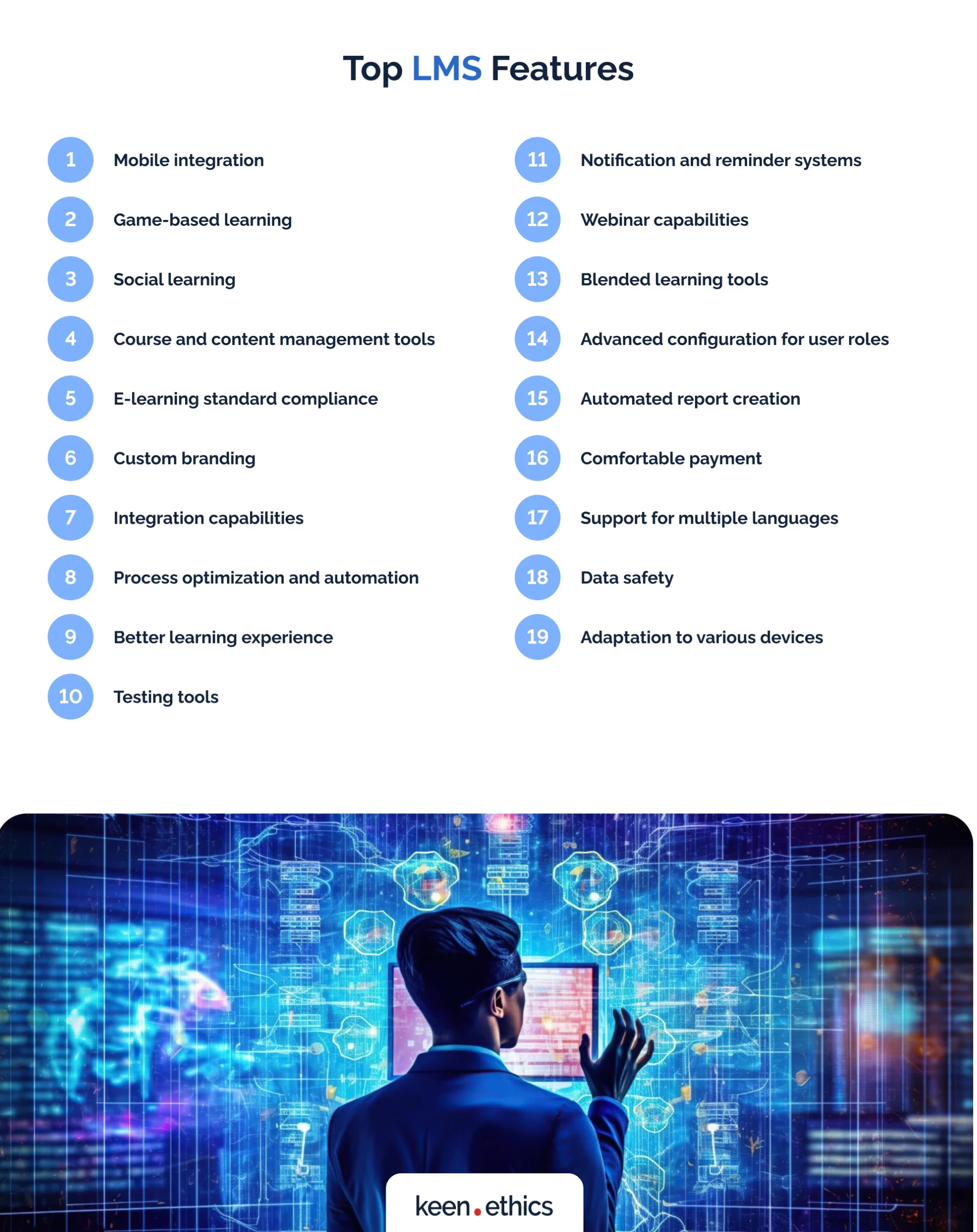
Now that we understand what LMSs are and their core subtypes, it’s time to review the top features of an LMS system.
Mobile integration
The primary reason to invest in an LMS is undoubtedly the integration of those systems with mobile platforms. In this regard, two pathways of integration are possible. You can embed the web version of your app into a container and use it as a mobile app. Modern tools also enable easy creation of native mobile apps: user-friendly solutions such as React.js exist.
Why is the mobile integration so vital today? The first reason lies in the fact that mobile platforms are the most widespread form of computing. There are 3 times more smartphones in the world than personal computers. Thus, it’s the most convenient platform for the majority of people. As for the second reason, smartphones are highly portable, enabling relevant individuals to study from any location. This is vital for microlearning and distance work, which are becoming increasingly popular these days.
Game-based learning
Traditional learning has one negative trait: most people dislike it. Why? They associate it with rote memorization, which is a source of major stress. As a result, the majority of the employees on the market feel they don’t get sufficient training. Modern Learning Management Systems are noteworthy for reversing the presented trend. They promote features such as blended learning and, what’s more, gamification.
Why is gamification so important? It represents a revolution in education because the method allows employees and students to learn organically. Rote memorization systems overcome the so-called forgetting curve (our tendency to forget information after some time) by requiring constant repetition. This is an inefficient framework since it relies on isolated information, which is up to 40 times less efficient than the one connected to a learning network, according to psycholinguistics research. Games present certain activities as a system. Hence, it’s easier to see logical connections and memorize information through them. Modern LMSs minimize the amount of time on creating games, making this strategy of learning highly viable.
Social learning
Social learning theory claims that efficient learning occurs in conditions of strong socialization. We learn by imitating and observing others. In this respect, modern LMSs are great at promoting this essential feature of efficient education. How do they achieve this? Above all, by offering many types of socialization features. Users can interact through forums and chats, which offer a higher level of visibility for various questions and techniques. Consequently, it’s possible to enable full-scale observation-based learning: the social learning feature of an average LMS allows students and employees to review the progress of their colleagues and make advanced choices aimed at correcting it.
Course and content management tools
A vital feature of any high-quality LMS is the ability to manage and modify courses. A teacher or training manager should have the capability to control the course they provide. This control should extend to two core capabilities. On the one hand, it’s crucial to offer configurations aimed at controlling users. For example, a manager should have the capability to include or exclude particular individuals. It’s also important to transform user roles. This feature is essential if you need to add several teacher assistants to a particular course.
On the other hand, you should also have the capability to modify the course content on the fly. This is vital in multiple situations. Sometimes, core findings in a particular field change, requiring fast modifications to the existing content. In other situations, you may want to add new content based on user preferences, boosting learner engagement. Modifications between different years of teaching are also vital. Teaching experience often indicates the need to transform this or that practice.
E-learning standard compliance
The modern LMS and e-learning field has a set of standards enabling interoperability for different platforms. Hence, the ability to work with these demands is among the main learning management system features.
What are some core standards on the market these days? They include frameworks such as SCORM and xAPI. SCORM is an older platform that is used in the majority of LMSs. In turn, xAPI is a modern technology that has more up-to-date features. If the involved system doesn’t have integration for these standards, then it’s unlikely to be of long-term value: you’ll have a major issue with migration in case it becomes necessary. We have a great article on this topic in our blog. You can find out more about SCORM and other standards by reading it.
Custom branding
A major must-have feature for any LMS is custom branding. Why is this the case? Firstly, branding is central for showcasing that some company or organization put major effort into creating content within a certain LMS. LMSs are mere hosts for different types of training materials.
Secondly, custom branding is typically essential for promoting a positive image of a certain organization. A school may want to showcase that it uses unique learning approaches by highlighting the relevant brand. A business can create a more positive onboarding experience by focusing on the showcase of its core brand. The ability to customize user interface to fit the needs of a particular organization is, thus, vital both from the reputation and copyright perspectives.
Does this mean the involved LMS shouldn’t have its branding inserted alongside that of a certain school or firm? No. Most custom Moodle LMSs highlight that they belong to this project and, at the same time, add organizational brands as parts of user experience.
Integration capabilities
Every LMS, however advanced, is unlikely to have all the features necessary for satisfying an average customer. Consequently, our recommendation here is to look for solutions that have high-quality integration features. One should have the capability to connect the most widespread learning tools on the market, such as testing platforms. Integration of media content should also be easy: platforms like edX, which are used as LMSs by many colleges, enable one to embed YouTube videos and media from other platforms.
In our opinion, the requirements in this regard are going to become stricter. Why? We’re facing a rise in the number of various innovations like AI and VR, which older systems are incapable of incorporating. Therefore, these elements are highly likely to influence LMS features by pushing them toward the stronger incorporation of cutting-edge technologies.
Process optimization and automation
A major reason to install an LMS is the ability to automate and optimize various processes. LMS systems are capable of analyzing tremendous amounts of information, creating a strong potential for improvements.
Above all, they help with automating information collection. Using those systems, you can make high-quality decisions on learner progress without having to track it. Student engagement and scores are automatically recorded and calculated in the majority of cases.
Another important way to use such systems is to automate tedious tasks like assessments. Not all types of assessments are easy to automate: whenever there’s an element of subjectivity, only in-person analysis is acceptable. However, you can completely automate various knowledge tests using the presented systems. Consequently, they offer you a great opportunity to save rather significant amounts of time and develop better learning content.
Better learning experience
One of the core benefits stemming from LMSs is their ability to improve learner experiences. They achieve this goal in several ways. The first positive impact comes in the form of flexibility. One can learn from any location and at any time using their mobile devices. Microlearning and flexibility create greater opportunities for students who, for example, have to combine education with employment.
As for other LMS features that upgrade the learning experience, multimodal learning and non-standards teaching approaches are important. Multimodal learning is the ability to learn through several means at the same time. For example, you can include video, text, audio, and 3D content simultaneously. Current research on the topic indicates that it’s steadily becoming a mainstream technique within the education sector. Modern LMSs are among the best frameworks for enabling it. More importantly, they’re also capable of enabling other teaching approaches, such as inquiry-based learning, which focuses on the non-linear consumption of learning content. AI is especially promising in this respect because it can be easily implemented into a high-quality LMS.
Testing tools

One of the core activities for teachers in the education system is testing. We can call this goal the most important element of learning after teaching itself, since it allows both teachers and students to see if their processes are efficient.
Modern LMS platforms are notable for simplifying this process for the majority of the involved parties. Firstly, they offer high-quality tools for setting up various types of tests in an online learning program. A high-quality LMS should have the capability to include both close-ended and open-ended questions. Secondly, those systems are noteworthy for their flexibility. A student can use such a system from any location. In many ways, this capability became the core element of a transition to online learning during the COVID-19 pandemic.
Lastly, testing tools are progressively receiving non-standard elements these days. In some platforms, one may code their solutions through internal customization tools. Coding-oriented frameworks also have fully functional command lines that help users with doing divergent coding tasks. In short, the current capabilities of LMSs are extensive.
Notification and reminder systems
In our opinion, a vital element of any LMS is a notification and reminder system. Why? Notifications are crucial when changes in education programs are occurring. For instance, if an exam date changes, a notification about this vital event can be essential for ensuring equal opportunities for all students.
As for reminders, they can also be important for a good LMS. Most colleges and even companies rely on deadlines in their learning programs. A notification is one of the best ways to remind certain students they have to complete this or that task by a certain date. This small feature is usually a vital element for ensuring a smooth learning experience with minimal frustrations.
Webinar capabilities
Traditional learning methods are losing popularity, but this doesn’t mean that they’re completely inefficient. As a result, an often-requested feature for all LMS frameworks is the ability to host webinars. Webinars are events that many people can attend and during which a lecture or even a set of lecturers deliver learning information.
The most common form of webinar content undoubtedly includes lectures. They usually require the capability to include hundreds of people in a single session. Hence, your chosen LMS should have the capability to withstand connections from a large number of individuals.
Obviously, it’s possible to use outside platforms like Zoom for these goals. However, an internal platform can be more comfortable to utilize and provide greater security levels.
Blended learning tools
LMSs are an essential part of modern blended learning. Blended learning involves the combination of classroom, online, and independent education. In this regard, LMS features are the core part of online and independent learning. If you want to establish this model in your education business, then LMSs are your only solution.
Advanced configuration for user roles
A potent learning system must also have a strict hierarchy of roles. In this respect, there are multiple types of users within such systems. One can include teachers, their assistants, and, of course, students in an LMS.
This role delineation is important for two reasons. Firstly, it maximizes the security of the involved system: if no clear role delineation is present, then students can find their way to, for example, test answers. Secondly, it makes the experience of using the involved apps more comfortable for all parties. Teachers will be able to concentrate on one type of feature, and students will have the ability to concentrate on learning in the first place.
Automated report creation
Most instructors and teachers are usually a part of a larger education hierarchy. Hence, they have to prepare reports and send them to higher-ups for analysis. In this regard, any good LMS must have the capability to summarize the core data and package it into a high-quality report. This feature is essential for saving user time. Today, the majority of teachers work 54 hours per week because they have to do a lot of paperwork apart from teaching. Modern LMSs greatly reduce pressure on them.
Comfortable payment
A sign of a high-quality LMS is also its approach to payment gateways. If it’s low quality, then the likelihood that other aspects of the user interface are similarly inefficient is high. The core goal of any app is to have a high completion rate for payments. By this, we mean that a user mustn’t have major barriers to payments once they have decided to buy something. A comfortable user experience during payment isn’t a guarantee of quality, of course. But it makes it more likely that users will have a good experience in other situations.
Support for multiple languages

If an app focuses on a large market (for instance, the European Union), then a vital LMS feature for it to have is a multi-language interface. The majority of LMS solutions these days are focused on the English language. However, if you work in a non-English-speaking country, then the most rational decision is to look for apps that support multiple languages.
What are your options here? Firstly, we recommend reviewing open-source apps. They typically have amateur but nonetheless sufficient non-English translations. Secondly, a vital practice is to search for solutions developed in your country. Some LMS apps are country-specific, including the unique requirements of their learning systems or business law.
And what if no suitable solution is present on the market? For instance, you may be using a rare language for teaching. In that case, an optimal solution is to go for custom app development by creating your in-house team or hiring outsourcing specialists. In this respect, you can address the Keenethics team: we have 8 years of experience in creating such custom solutions.
Data safety
A common problem of every employee training system and other learning framework is that they collect tremendous amounts of information on the users. For example, many colleges require users to engage in self-reflection, which can often include tremendous amounts of information on them. If this information leaks, it can damage the lives of the involved individuals in some manner. Consequently, we highly recommend focusing on the essential security features of LMS apps. What should one include? Focus on two-factor authentication, encryption, and module isolation.
Adaptation to various devices
The modern market features a tremendous number of different devices. Devices differ in terms of their size, input methods, and operating systems. Thus, you need to consider the ways to adapt an LMS to different experiences. This feature is called responsive design: it’s a cornerstone of a powerful solution because it allows students to engage in the main learning session and additional training regardless of the device they’re using.
FAQ
What benefits do LMSs offer?
Here’s the list of benefits that LMS features give users, according to our experience:
1) Centralized management of learning content;
2) Easy tracking of user progress;
3) Significant customization;
4) Automated notification and reminder systems;
5) White labeling;
6) Comfortable communication via chats and forums;
7) Automated assessments;
8) Integration with multiple devices;
9) Integration with multiple apps;
10) Personalization;
11) Major scalability.
How do LMSs and LXPs differ?
The LMS and LXP concepts are close. In a way, LXP or Learning Experience Platform can be considered an evolution of LMSs. An LMS focuses on the teacher or instructor-generated content, which remains static. An LXP is notable for using AI technologies to create a more personalized learning experience. It adapts content to the learning needs of the users instead of following the static pathways offered by education organizations.
To make this concept simpler to understand, let’s look at an example: a language learning app using the LXP framework can generate questions and exercises based on the experience of the user. Such systems, for instance, can analyze user interests and provide content based on them.
How to choose a high-quality LMS?
In our opinion, the core element here is to review your needs rather than the experiences of other companies. So, you need to do the following things:
1) Analyze the gaps in the learning approaches of your organization (for instance, you may need e-commerce functionality).
2) Choose several apps on the market and compare their offerings with your needs;
3) Select the app that fits your goals or order custom software from a specialized business.
Keenethics can assist you in the development process!

